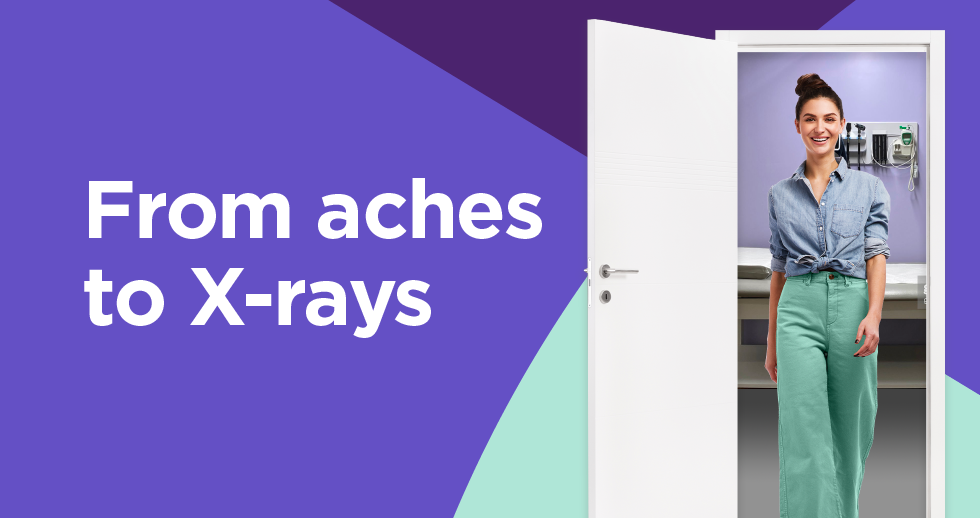
As emergency rooms become more and more crowded, urgent care centers are playing a crucial role in ensuring that all patients receive the medical care they need.
How Are Urgent Care Centers Different from Emergency Rooms?
Both urgent care centers and ERs have skilled medical staff and labs on site. ERs have access to trauma-specific resources, making them ideal for potentially life-threatening conditions. However, if your situation is not life-threatening, visiting an urgent care center is likely a better choice. Treatment at an ER for less-severe injuries or illnesses can cost you significantly more time and money, while not providing a higher quality of care for the same treatment.
Urgent Care vs. Emergency Room: Which Option Is Better?
Many common conditions and symptoms don’t require a trip to the emergency room. Here are some of the conditions that can be successfully treated at an urgent care
walk-in clinic:
- Ear pain
- Fever
- Gastrointestinal discomfort, such as diarrhea
- Lacerations
- Simple sprains or fractures
- Sore throat
- Vomiting
While FastMed medical providers can resolve a variety of symptoms and conditions, some situations are best treated at the hospital. We recommend visiting an emergency room if the following occurs:
- Confusion
- Coughing blood
- Deep wounds or excessive bleeding
- Drug overdoses
- Head injuries
- Seizures
- Severe chest pain or abdominal pain
- Severe injuries caused by an automobile accident
If you have questions about the different types of conditions treated at FastMed, give us a call or visit our service page for more information.
Urgent Care vs. ER Cost
One of the primary factors when deciding between urgent care vs. emergency room is cost. Regardless of the treatment administered, emergency room visits are typically far more expensive than visits to an urgent care center—patients spend, on average, approximately $2,259 at the emergency room.
The average self-pay cost of an urgent care center visit is $168, but at FastMed, we’re committed to offering more affordable care to patients seeking self-pay urgent care services. A basic self-pay visit with a medical provider at one of our urgent care centers is just $119, and includes and a provider visit comprised of the evaluation of common medical complaints and the corresponding basic medical treatments, plus up to two diagnostic tests. Check out more details on this program, including pricing on common self-pay services at FastMed.com/SelfPay.
An Urgent Care Walk-In Clinic Can Save You Time
Increased cost isn’t the only factor to consider when deciding between urgent care vs. emergency room. Treatment at an emergency room typically takes much longer than an urgent care visit. The vast majority—92 percent—of urgent care visits have wait times of less than 30 minutes, and most urgent care visits take under an hour. This is in sharp contrast to the average wait time for ER visits, which is four hours.
Our medical providers are committed to seeing patients as quickly as possible—the average visit at FastMed is 56 minutes from start to finish. We also provide online check-in services for patients, allowing them to secure a spot in line without having to fill out lengthy paperwork.
Will I Receive High-Quality Care at an Urgent Care Clinic?
Receiving high-quality care is possible without an emergency room visit. A patient analysis found that treatment for common illnesses is equal or better at urgent care clinics than at ERs. Plus, urgent care centers often provide personalized care that an emergency room simply cannot. Patients who see urgent care clinicians are more likely to receive recommendations for preventative practices. In fact, an urgent care clinic can be a substitute for a visit to your primary care physician.
At FastMed, we’re dedicated to providing exceptional, patient-centered care. We’re the largest urgent care operator to receive the Joint Commission Gold Seal of Approval, a distinctive honor for healthcare providers. This means that FastMed patients can expect attentive, high-quality care that helps them achieve better health.
So, What Does It All Mean?
When deciding between an urgent care clinic or the ER, the severity of your condition is what matters. Life-threatening conditions should always be treated at the hospital. However, less-severe conditions can be treated more quickly at an urgent care clinic—and at a lower cost—with equal, if not better, quality of care.
About FastMed
FastMed is a leading provider of high-quality, convenient, affordable, and compassionate healthcare in 34 counties across North Carolina. FastMed serves both urban and rural communities across the state with a wide range of care options, including preventive, telemedicine, occupational health, and primary and urgent care. FastMed is one of the few urgent care providers in the nation that has earned The Joint Commission’s coveted Gold Seal of Approval® for quality, safety, and infection control in ambulatory healthcare. For more information, visit www.fastmed.com.